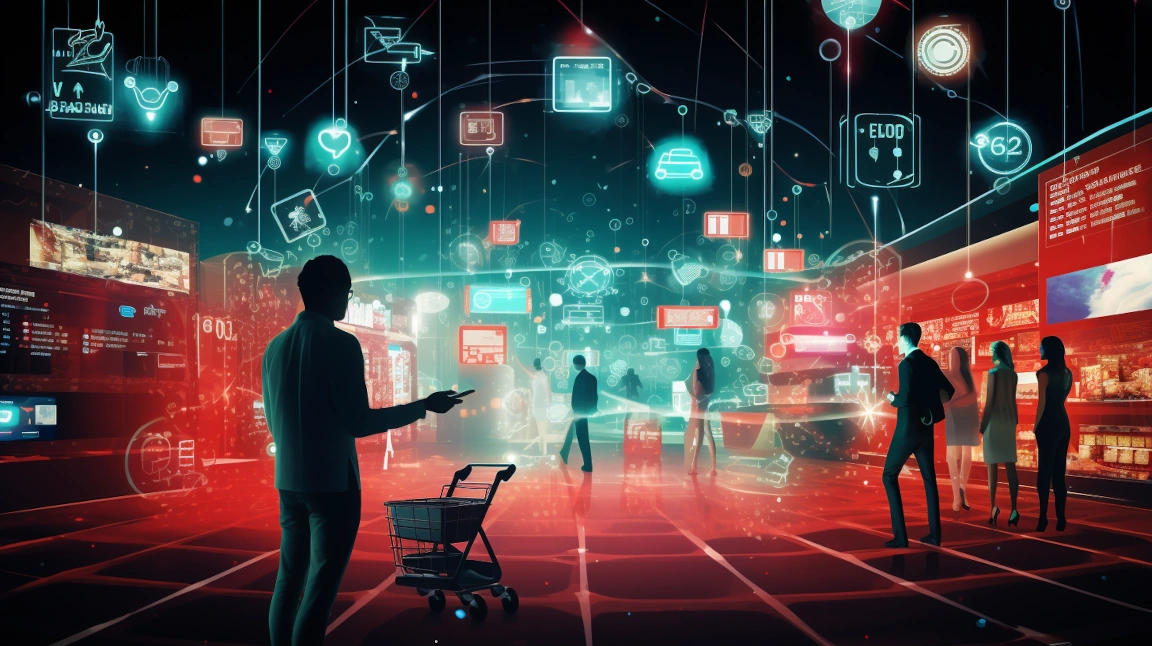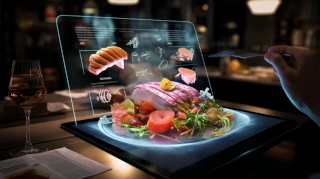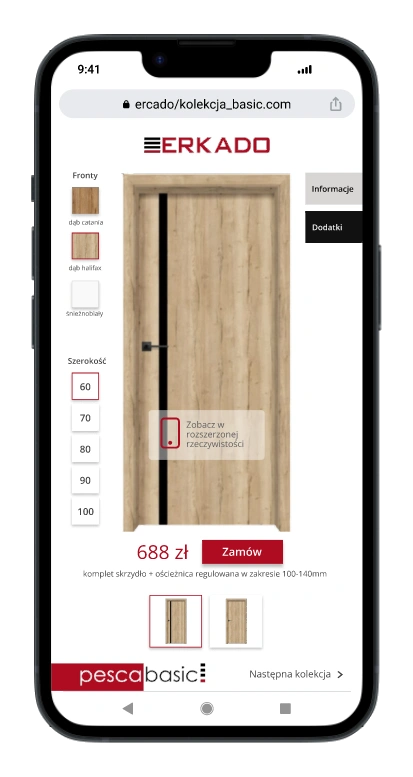Adaptation or revolution? Technology trends in retailing

Today, retail stands at the crossroads between adaptation and revolution, facing rapidly changing technological trends. In our article today, we will explore how modern technologies such as augmented reality (AR), virtual reality (VR), artificial intelligence (AI) and social commerce are transforming the way retail brands interact with customers. We'll take a look at how these innovations are impacting the shopping experience, personalization of offerings and commerce efficiency, and how they are shaping the future of the industry. Whether adaptation or revolution, the retail sector is undergoing a transformation that is redefining commerce in the 21st century.
Augmented Reality (AR) in Retail: The Future of Customer Interaction
Augmented reality (AR) is revolutionizing retail, opening the door to a whole new shopping experience. With 3D visualization customers can "try on" clothes or "place" furniture in their homes even before they make a purchase. It's not just fun; it's functionality that addresses real consumer needs, enabling them to make more informed purchasing decisions. Stores using 3D products configurators AR are offering customers virtual fitting rooms, interactive product displays and even virtual advice from stylists. This innovative approach not only increases customer engagement, but also builds long-lasting relationships by providing memorable, personalized shopping experiences that are difficult to replicate in traditional retail.
Retail technology trends: immersing the customer in a virtual experience
Virtual reality (VR) in retail is not just the future, but already a reality that is changing the way customers interact with products. VR allows for the creation of full-space, immersive environments where customers can explore products in ways that no stationary store can offer. Imagine being able to walk around a virtual store, touching products and exploring them from every angle, without leaving home. Companies are using VR to showcase everything from clothing to cars in full view, allowing customers to experience a product before they actually buy it.
Artificial intelligence and machine learning as retail tech trends: personalization and efficiency in retailing
Artificial intelligence (AI) and machine learning are revolutionizing retail, ushering in an era of hyperpersonalization. Thanks to AI, stores can analyze vast amounts of data about customers' shopping behavior, preferences and needs, making it possible to make personalized product recommendations. AI also helps optimize retail operations – from inventory management to trend forecasting. Machine learning can predict which products will be popular next season, helping stores manage their inventory efficiently. Personalization through AI is not just about matching products to customers, but also creating personalized shopping paths that lead to increased customer satisfaction and increased sales. In today's crowded retail world, AI and machine learning are key to understanding and meeting each customer's individual needs.
Technology trends in retail: Metaverse – a new era of shopping experience
Metaverse opens up entirely new possibilities for retail, creating a space where the boundaries of reality and the virtual world blur. It allows retail brands to create virtual stores, showrooms and shopping experiences that transport customers into immersive digital worlds. For consumers, the Metaverse is an opportunity to explore products and services in a dynamic and interactive way, opening up a new dimension of shopping experiences. Brands can use these new technologies to build deeper relationships with customers, offering them not just products, but entire stories and experiences. The metaverse is thus becoming an exciting new field for retail brands to explore, offering unlimited possibilities in creating the future of commerce.
Social Commerce
Social commerce, or the combination of retail and social media, is gaining importance as a key component of many brands' sales strategies. Platforms such as Instagram, Facebook and TikTok are becoming not only places for content sharing and interaction, but also important sales channels. By integrating shopping features into social media apps, shopping becomes more intuitive and accessible directly from posts or stories. This proximity to the consumer allows brands to build stronger relationships and better understand customer needs. Social commerce also allows brands to leverage the influence of influencers and content creators, who can effectively promote products and persuade purchases through authentic communication.
Shoppable videos: zanurzające doświadczenia zakupowe
Shoppable videos, czyli filmy zakupowe, to innowacyjny sposób na angażowanie klientów i ułatwienie procesu zakupowego. Ta forma prezentacji produktów łączy w sobie atrakcyjność wizualną wideo z bezpośrednią możliwością zakupu przedstawionych produktów. Użytkownicy, oglądając film, mogą kliknąć na interesujące ich przedmioty i bezpośrednio przejść do strony produktu w sklepie internetowym. Shoppable videos stanowią więc doskonałe połączenie informacji, rozrywki i komercji, co sprawia, że zakupy stają się bardziej dynamiczne i zanurzające. Jest to szczególnie atrakcyjne w kontekście młodszych konsumentów, dla których wideo stanowi naturalny sposób konsumpcji treści. Shoppable videos otwierają nowe możliwości dla marek detalicznych w zakresie storytellingu, prezentacji produktów i budowania wrażeń zakupowych.
Adaptation or revolution? Final conclusions about trends in retail technology
In today's retail world, the line between adaptation and revolution is becoming increasingly blurred. On the one hand, there are constant technological developments that are introducing revolutionary changes – such as the entry of the Metaverse or the use of artificial intelligence in personalizing offers. On the other hand, we are also seeing the adaptation and evolution of existing business models, which must adapt to new consumer expectations and behavior, as well as to the changing market environment. In this context, it becomes crucial to understand that success in retail depends on flexibility and the ability to adapt to changing conditions, while taking advantage of revolutionary new technologies. Ultimately, both adaptation and revolution are essential to running a successful and modern retail business.
Do you like the post? Share to others!

Krzysztof Basista
COO
For years, he has been involved in AR / VR projects ranging from entertainment to heavy industry. Always looking for problem solving through technology.
Contact us
Related posts

Augmented reality (AR) is a technology that combines the physical and digital worlds to create an interactive experience. AR technology is used in a variety of industries...

Have you ever wondered how to make your product stand out in the thicket of competition that is constantly flooding the market? How to make it your novelty that catches...

AR glasses, also known as augmented reality glasses or mixed reality glasses, are wearable devices that overlay digital information onto the user's real environment...

Not so long ago, augmented reality was a science fiction subject, fascinating but distant. Today, it is at our fingertips, literally. Our smartphones...

3D AR configurators, combining augmented reality technology with 3D modelling, are becoming increasingly popular in industries ranging from furniture to automotive.

Augmented reality (AR) has become a powerful tool in the hands of marketers, enabling the creation of memorable, interactive experiences for customers.






